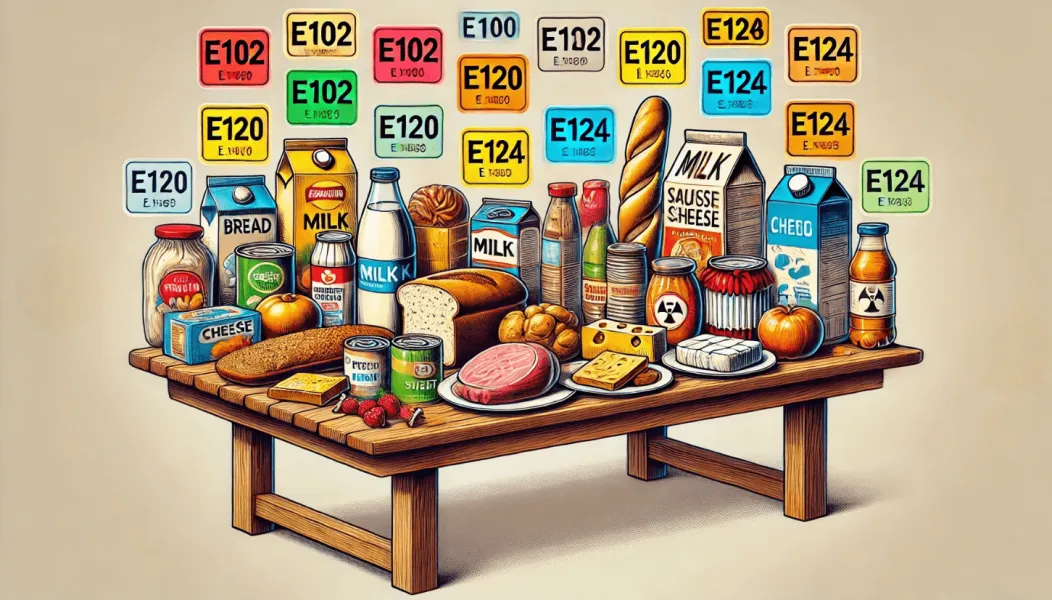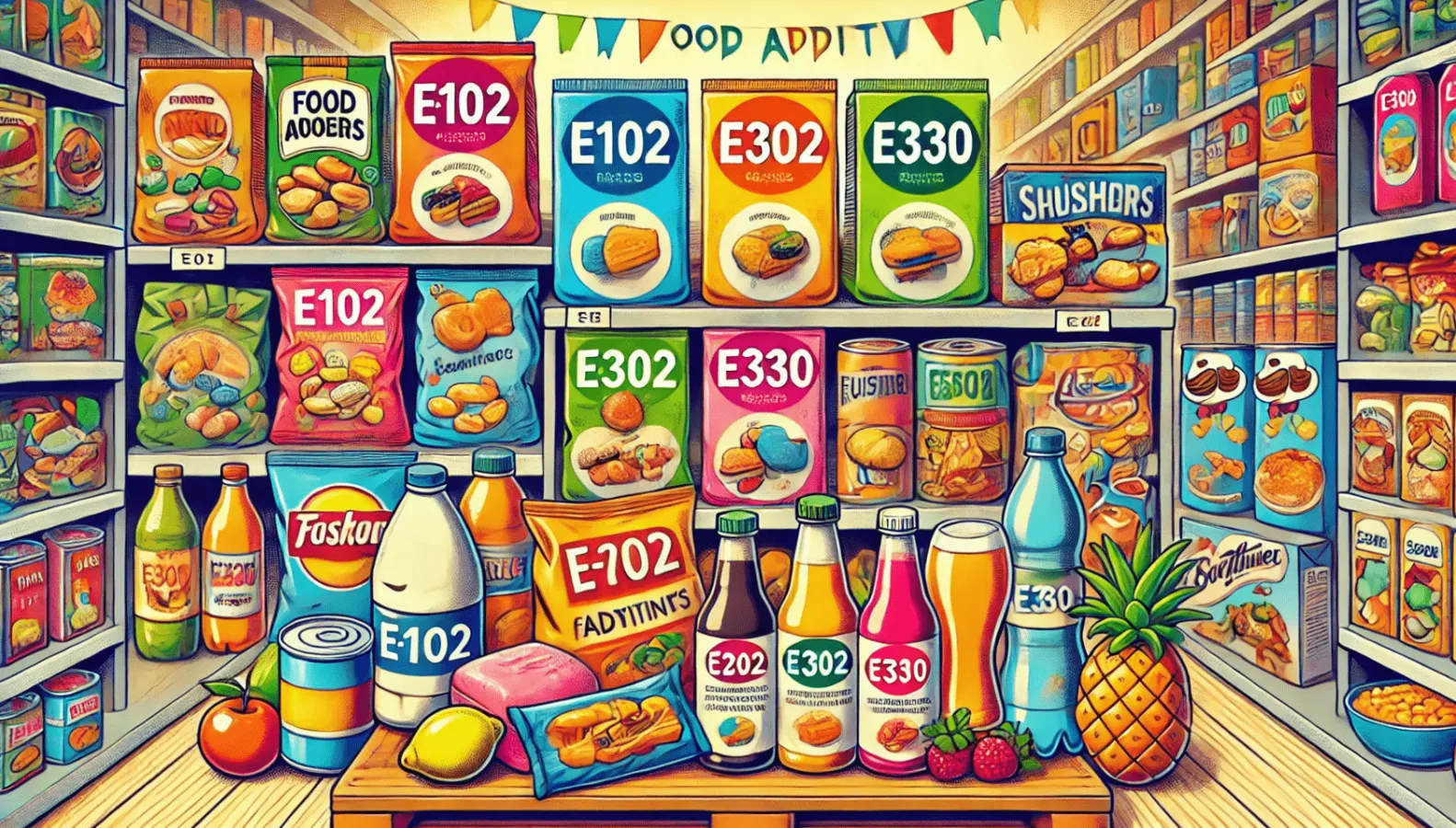Food additives are chemical components added to industrially produced food products. This concept includes an extensive list of substances used to give products various additional properties. Such impurities can increase the shelf life of products, improve their taste characteristics, change the color or consistency, etc. Often, with the help of food additives, food manufacturers solve a number of technological difficulties, but for the consumer the need to use these components is not obvious. In addition, there is a widespread opinion that food produced by an industrial method can be harmful to health, and in some cases it is justified. Let's try to consider this issue in more detail and find out how harmful dietary supplements are.
Usually, food additives are not consumed as an independent product, they are used in mass production for technical purposes or to improve any characteristics of processed food. Food additives approved for use are previously subject to comprehensive verification by the competent authorities, however, the safety standards applied may vary markedly at the international or national levels. In particular, the safety of additives in food products distributed through international trade is assessed by a special organization, the JCEFA. At the same time, the supervision of the use of food additives within the borders of a separate state is carried out in accordance with local legislation.
The safety assessment of food additives is carried out taking into account scientific data based on toxicological and biochemical testing. At the same time, mandatory tests are carried out on control groups of animals, in which the types and chronology of the effects of a food additive, the mechanisms of its assimilation and excretion from the body, as well as the consequences and side effects of use are investigated.
Food additives that have passed through the safety assessment procedure are marked with the letter "E" and the corresponding numeric code. This international classification system was developed in 1953 and is currently used in most countries of the world. However, it is not mandatory, which is why many manufacturers replace the code label with the full name of the food additive for marketing purposes. In some cases, both types of notation are used.
One of the fundamental criteria for the harmlessness of a food additive is the norm of permissible daily intake (PDI). This parameter evaluates the amount of additive in a product that can be consumed regularly for a long time without harmful effects on health. Thus, the chipboard norm not only serves to regulate the possibility of using a food additive, but also determines its maximum permissible concentration.
The use of food additives in the product must be justified in the form of technological necessity. Therefore, food additives are used in cases where it is impossible to obtain the required properties using other technological methods. For example, fat-rich foods are often prone to rancidity and loss of nutritional properties, but various antioxidants noticeably slow down this process.
Harmful additives in products
The practice of introducing food additives into food products dates back to the 19th century and many mistakes were made in the development of the food industry. For example, boric acid has been widely used as a food preservative since the 1870s, but after the First World War its toxicity was proven, which led to a ban on the use of this harmful food additive. Despite this, during the Second World War, the harsh demands of circumstances forced people to resort to the use of boric acid again, since at that time it was the most affordable preservative.
Formaldehyde, which was added to chocolate bars, was previously considered harmless, but over time this additive was also recognized as dangerous. A number of cases where a component used for years has been banned for use due to new data on its effects on the human body have given rise to distrust of food additives. The phenomenon when a person is afraid to consume any product that contains food additives is called "chemophobia". The result of public distrust of food additives was the emergence of the so-called "precautionary principle", in which any substances theoretically capable of harming human health are prohibited.
However, it should be borne in mind that the safety of approved food additives is far from absolute. The production methods of these components may vary markedly from country to country, as well as the standards for the content of harmful impurities. In addition, potentially harmful dietary supplements E can often harm a person if they have an individual intolerance or any health problems. Because of this, doctors recommend limiting the presence of dietary supplements in the diet of allergy sufferers, children and the elderly. It is worth noting that there are a number of completely harmless, and even useful food additives.
According to the production method, food additives are divided into three main groups:
- Natural food additives are made from animal, vegetable or mineral components. Such substances do not cause harm to health if a reasonable standard of use is observed. Natural food additives can only harm if a person has an allergy or another form of individual intolerance.
- Additives identical to natural ones are synthetic components that copy substances found in nature. Depending on the production conditions, such additives may contain harmful by-products.
- Synthetic food additives are represented by an extensive list of artificial chemical components and some of them have not been studied deeply enough. Certain substances from this group can have a noticeable negative impact on the health of a person who has a predisposition to certain diseases. It is in this group that the most dangerous additives are found, but not all of them are such.

In most cases, harmful E supplements do not cause noticeable damage to health with rare, irregular use. The negative impact of such components is cumulative and does not manifest itself immediately. Such familiar ingredients as salt and sugar are technically also food additives and are considered safe, but in large quantities they can harm health. In the absence of medical contraindications, moderation is a sufficient precautionary measure that can protect the human body from exceeding the permissible concentration of even the most dangerous food additive. In the generally accepted classification, food additives are divided into the following categories:
Food dyes (E 100–E 199) are added to food products to give them an attractive coloring. Often, the natural pigment is destroyed during industrial processing, which may cause the product to lose its natural color. In such a situation, the use of food dyes allows the product to return to its usual appearance. However, dyes are often added in order to make the product more beautiful, thereby increasing its marketability. There are both harmless and dangerous food additives in this group.
Preservatives (E 200–E 299) are used to slow down the process of spoilage of products due to the effects of biological factors. In addition to increasing the shelf life of food, preservatives are needed to eliminate the sources of disease. Some harmful preservatives are allowed for limited use, as they are a lesser evil and are necessary to eliminate pathogens, including deadly botulism. Such dangerous E substances are indispensable in meat industry products.
Antioxidants (E 300–E 399) in the food industry are used to slow down oxidative processes, due to which products can lose their taste qualities. Some antioxidants benefit human health, but others can cause harm. In this group, it is particularly worth highlighting the substances that cover the peel of fruits for their long-term storage or transportation. Such antioxidants are certainly harmful, therefore, fruits should be thoroughly washed before eating, since the most dangerous E additives are often used to process their inedible peel.
Stabilizers (E 400–E 499) are used to give the food product the necessary consistency and shape, as well as to preserve them throughout the shelf life. A significant part of food stabilizers are made from natural plant components, but there are also purely synthetic substances in this category. The use of products containing stabilizers should be limited to people who have been diagnosed with metabolic disorders or diabetes.
Emulsifiers (E 500–E 599) are necessary for the uniform mixing of substances that are otherwise separated. For example, thanks to emulsifiers, you can make a mixture of oil and water, which are part of mayonnaise or mustard. In this case, the resulting mixture gets a homogeneous consistency that persists for a long time.
Flavor enhancers and flavors (E 600–E 699) are used to produce an extensive list of products in order to improve their flavor characteristics. One of the most common representatives of this group is sodium glutamate (E621). This substance enhances the taste of any product, however, if overused, it can cause allergies and food addiction.
Sweeteners (E 420-421, E 950-969) are used as a sugar substitute to give the product a sweet taste. Many types of such additives are very sweet, which is why they can be used in small quantities. Foods in which sugar is replaced with a sweetener are preferred for people with diabetes. Certain types of sweeteners can cause negative effects on the intestinal microflora.
The harm of food additives: how to avoid it?
Many people ask the question “Are food additives harmful?” yes, most of them are harmful, but this can be avoided: give preference to natural foods or products that have undergone minimal processing. A significant part of food additives is used in industry to optimize production processes and such substances are not found in products with minimal processing.
Be careful when reading the label on the package. If any food additive is present in the product, by law it must be indicated in the composition. Special attention should be paid to such information for people with health problems.
Try to eat a variety of foods. As a rule, the content of a food additive in a product is regulated by the competent authorities and does not pose a threat to health. However, repeated use of the same supplement in food can lead to a cumulative effect.



